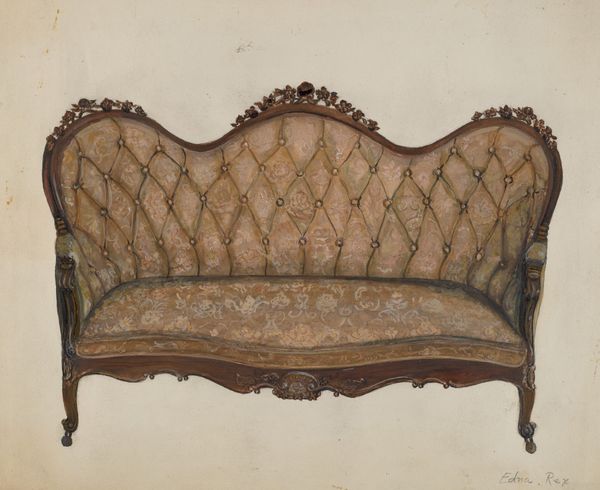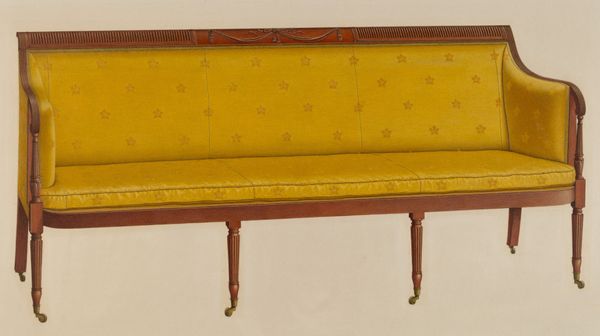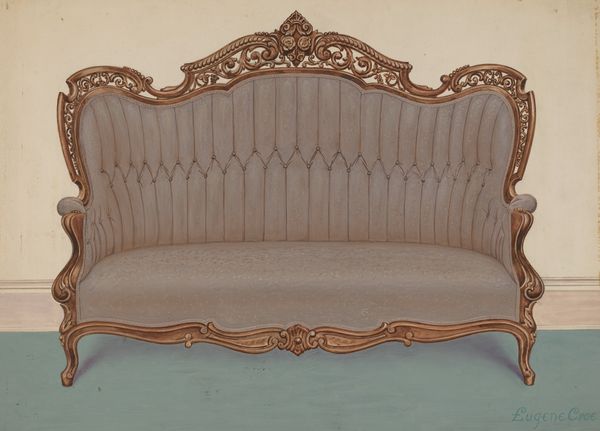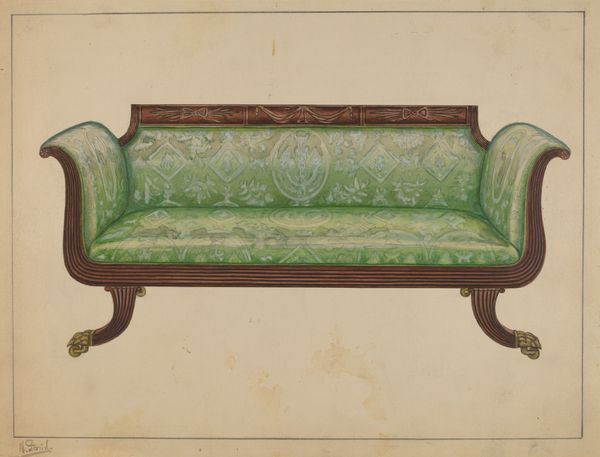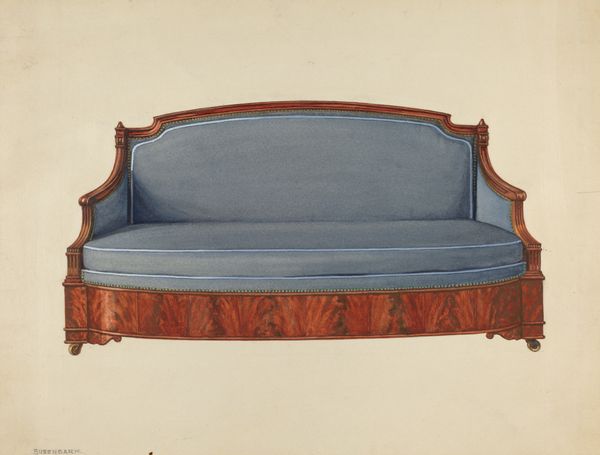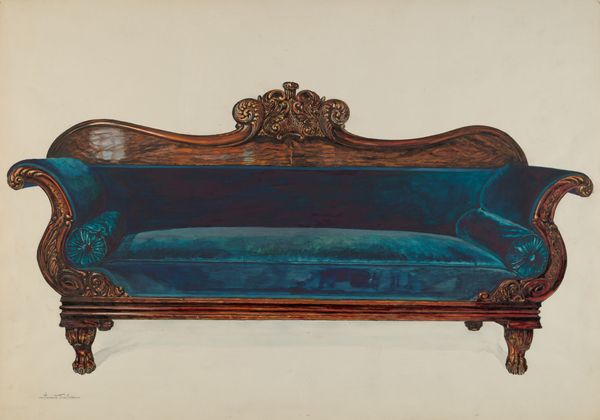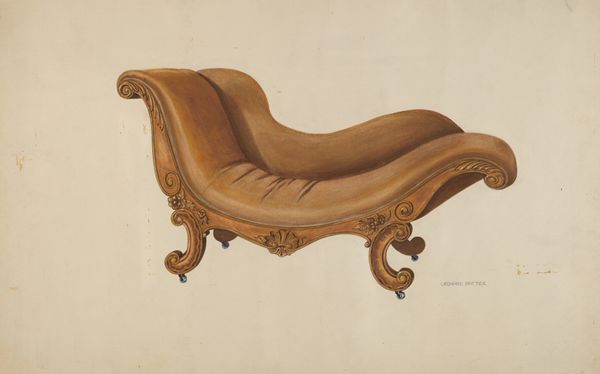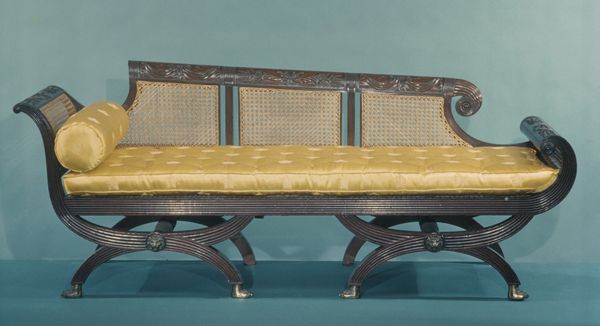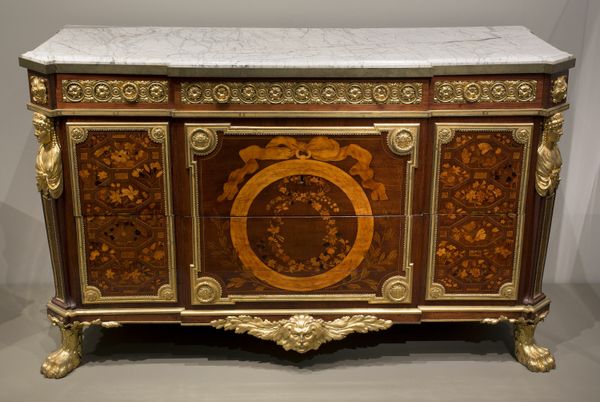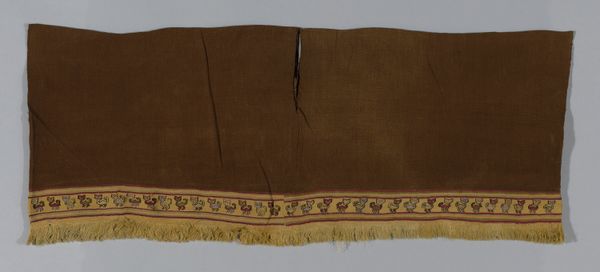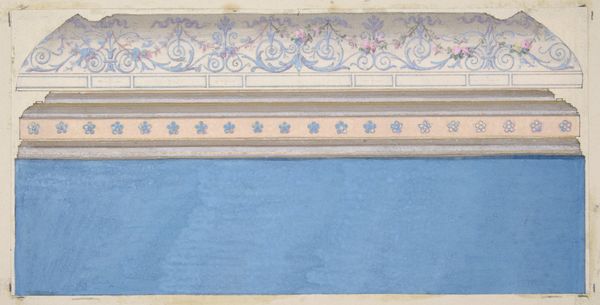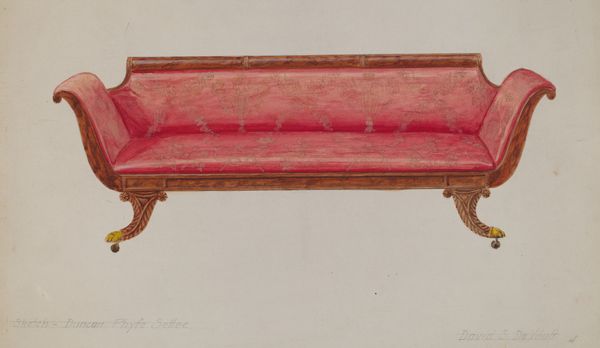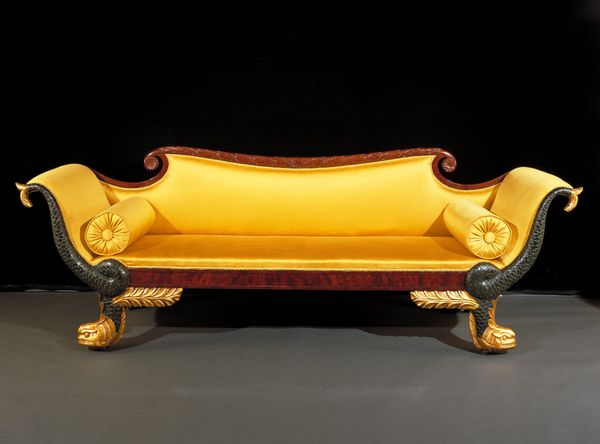
drawing, watercolor
#
drawing
#
oil painting
#
watercolor
#
watercolour illustration
#
genre-painting
#
academic-art
#
watercolor
Dimensions: overall: 23.9 x 30.4 cm (9 7/16 x 11 15/16 in.) Original IAD Object: 36"high; 26"deep; 82"long.
Copyright: National Gallery of Art: CC0 1.0
Curator: This is Edward A. Darby's "Mahogany Sofa," a watercolor from between 1935 and 1942. Editor: My first impression is one of careful detailing and a warm domesticity. The ornate shape and the patterned upholstery give it a luxurious but comfortable feel. Curator: Absolutely. Darby’s skill with watercolor captures the textures of both the wood and the fabric beautifully. Consider the way he renders the wood grain and highlights, juxtaposed with the soft, repetitive pattern of the fabric. The piece prompts questions about the status of furniture-making and domestic labor during the interwar period. Was this sofa aspirational? Who owned it? Editor: I'm drawn to the curvature, the lines moving across the frame and how the upholstery's floral patterns work with the sofa’s shape. The way the arm gently slopes down invites the viewer to imagine reclining there. Semiotically, it’s interesting: what is being communicated here through the signifiers of comfort and luxury? Curator: Beyond aesthetics, the sofa invites reflection on industrial production. Mahogany as a material carries historical weight—often linked to colonial trade and labor exploitation. Darby, even unintentionally, alludes to global economic structures simply by depicting this single piece of furniture. We should ask, where did the mahogany come from, who crafted this? Editor: You make a crucial point about origins and processes. It certainly shifts my perspective beyond its formal qualities. Thinking about its composition: the sofa dominates the pictorial space. The background is stark, drawing all the attention to the furniture, an isolation that highlights its form. The artist invites close inspection of craftsmanship, to value this ordinary object. Curator: Precisely, elevating a seemingly mundane object, like a sofa, asks the audience to think about how it functions within a wider socio-economic picture, connecting art with real lived experience and the realities of making things. Editor: It’s true, reflecting on its history does change the viewing experience for me, allowing me to really appreciate how much social information it presents alongside such graceful curvature and texture. Thank you for pointing that out.
Comments
No comments
Be the first to comment and join the conversation on the ultimate creative platform.
